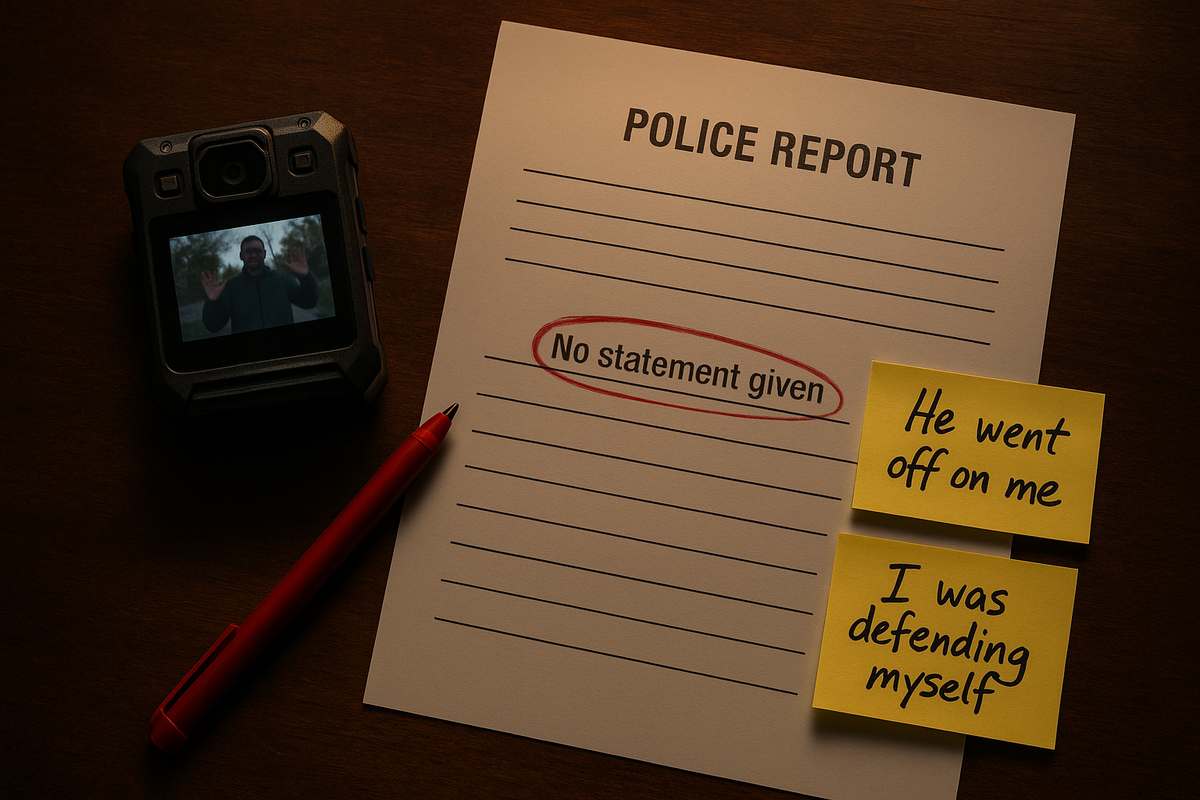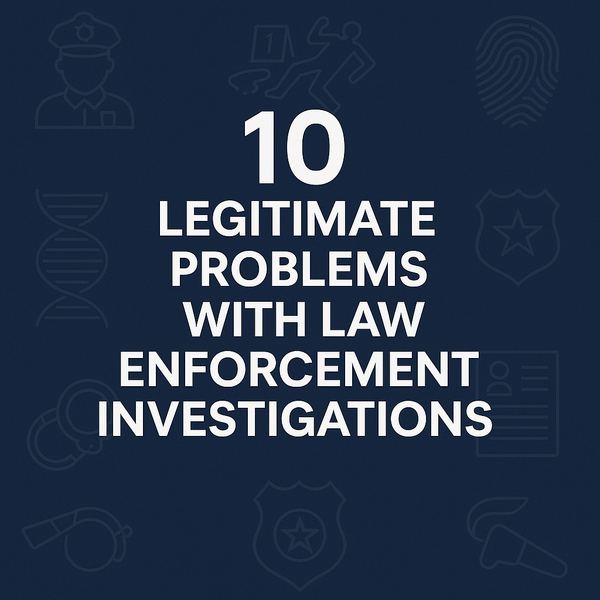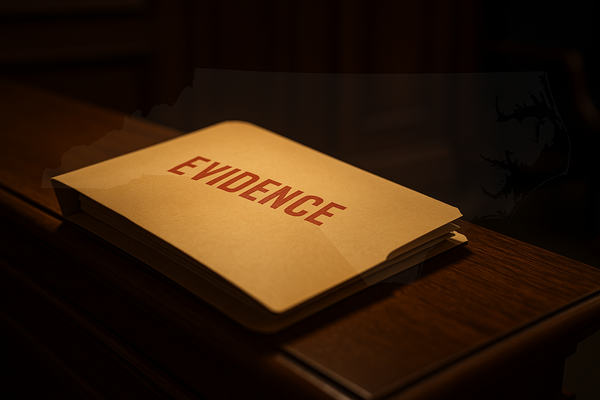When Silence Speaks Louder: Spotting Omitted Self-Defense Statements in Police Reports

A single missing sentence can swing a case. Learn how to catch omissions before they catch you.
The problem in plain view
Imagine reading an incident report that states, “Defendant requested an attorney and gave no statement.”
Then you watch the body-worn camera. Within the first ninety seconds the defendant blurts:
- “He went off on me.”
- “I was defending myself.”
Those spontaneous, unprompted remarks go straight to self-defense—yet the officer left them out. That gap doesn’t just trim fluff; it reshapes the entire narrative. Research shows officers’ reports already “control the construction of facts” for everyone else in the system, and omissions erode that fragile trust.
Why omissions happen
- Confirmation bias – Officers subconsciously favor details that fit their first impression.
- Report brevity incentives – Many supervisors reward short, “clean” narratives.
- Footage first, memory second – Policies often let officers review video before writing, which can overwrite honest memory with what the camera captured—or missed. The NACDL warns that officers should not watch body-cam footage before drafting initial reports.
- Recording gaps – Over half of major-city departments lack penalties for failing to record critical moments, leaving whole conversations undocumented.
Why it matters in court
- Brady & Giglio exposure – Suppressing or omitting exculpatory statements violates due-process duties to disclose favorable evidence.
- Credibility attacks – A missing quote lets the defense impeach the officer: “If you omitted this, what else did you omit?”
- Jury persuasion – Jurors who see video-text discrepancies often question the thoroughness of the entire investigation.
Quick comparison: report vs. reality
| Source | Narrative on Defendant’s Words | Impact |
|---|---|---|
| Officer’s report | “No statement; invoked counsel.” | Implies silence, paints guilt. |
| Body-cam clip | “He went off on me.” | Shows fear, introduces aggressor. |
| Body-cam clip | “I was defending myself.” | Direct self-defense claim. |
One omission erased two exculpatory facts.
Body-Cam Review Checklist
Use this step-by-step list every time you receive footage or discover it exists.
- Sync timelines – Match the report’s time stamps with the video start/stop points.
- Log verbatim quotes – Transcribe all spontaneous remarks, especially about intent or fear.
- Note officer reactions – Did officers acknowledge or ignore the statements?
- Flag recording gaps – Look for abrupt audio cuts or camera angle changes. Missing video remains a national problem with limited repercussions.
- Compare against CAD/radio logs – Discrepancies may reveal unreported questioning.
- Preserve metadata – Export the file with hash values to prove authenticity.
- Demand early disclosure – Nearly 80 % of large U.S. departments now use body-cams; request footage immediately and cite its routine availability.
- Prepare impeachment exhibits – Create side-by-side slides of the report line and video transcript.
- File timely motions – Seek a Brady remedy or move to suppress if the omission prejudices the defense.
- Document every finding – Your notes may become an affidavit or testimony.
Action plan for defense teams
- Request footage day one. Cite local open-records laws and discovery rules.
- Lock preservation. Send a preservation letter if policies lack clear retention periods.
- Question with precision. Ask the reporting officer to read the report aloud, then confront with missing quotes.
- Argue inference. Courts increasingly allow jurors to draw negative inferences when key evidence disappears. (digitalcommons.law.uga.edu)
- Educate the jury. Explain that body-cams capture only a slice of reality and reports can further narrow that slice.
Closing thoughts
Police report omissions aren’t clerical errors; they steer perceptions. By pairing every written narrative with the raw lens of body-worn video, you help restore balance to the fact-finding process. If you need help auditing footage, developing impeachment exhibits, or crafting motions, Aubor Group stands ready to assist.
Did you know that agencies which use Axon body cameras have access to AI transcriptions of recordings?




